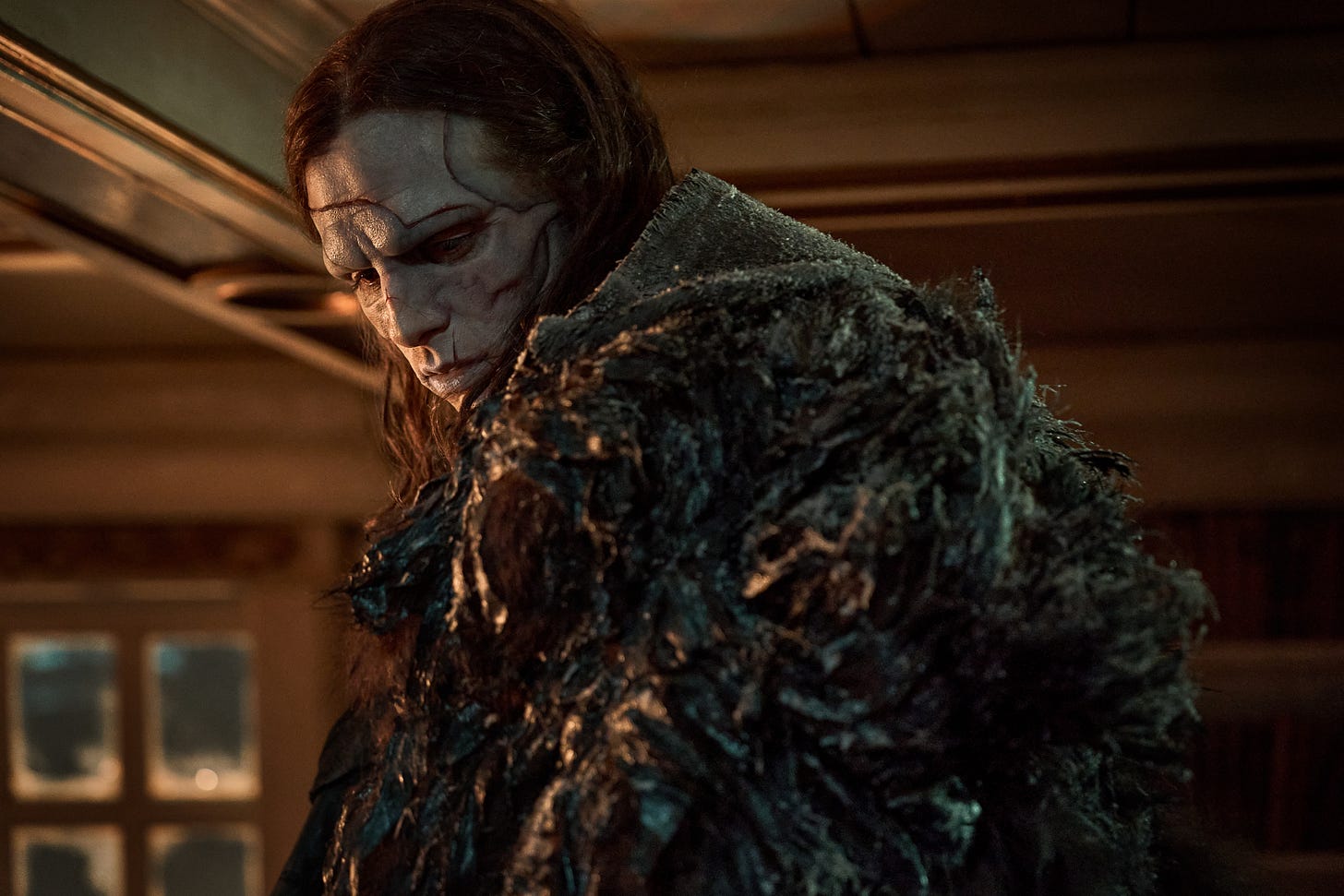Frankenstein: Letting the Monsters Speak
Guillermo del Toro, Oscar Isaac, Jacob Elordi, Mia Goth, Alexandre Desplat, Tamara Deverell, Mike Hill, and Kate Hawley discuss bringing Mary Shelley’s Frankenstein to life for Netflix
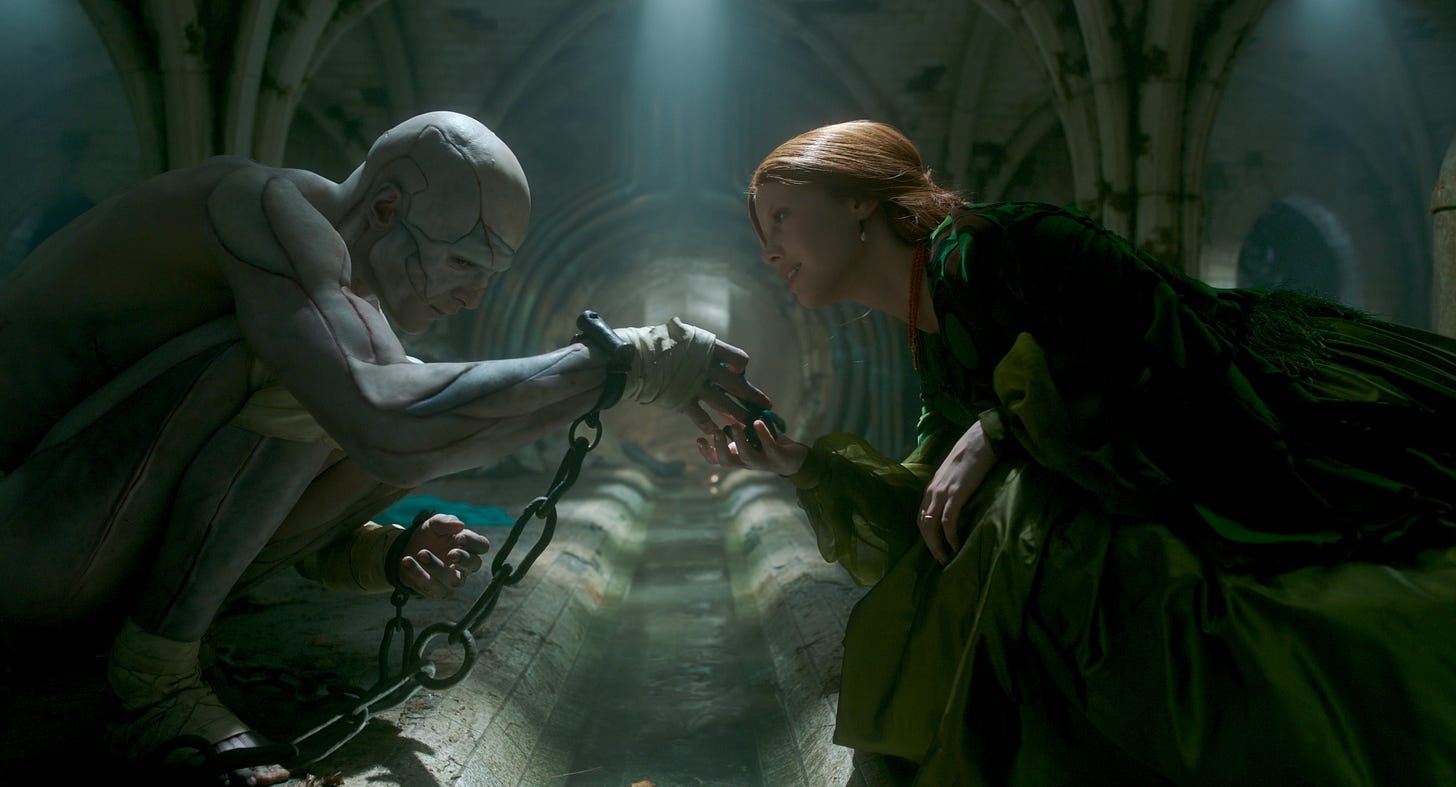
Guillermo del Toro has been dreaming of Frankenstein since he was seven years old. That was when he first saw Boris Karloff cross the threshold in James Whale’s 1931 classic — a moment he describes as a religious awakening.
What unfolded across the panel was a remarkably open conversation — not just about Frankenstein as a film, but about fathers and sons, creation and cruelty, art and obsession, and the question that burns at the heart of Mary Shelley’s novel: What makes us human? Del Toro’s cast and creative team echoed that same depth. Oscar Isaac, Jacob Elordi, Mia Goth, Alexandre Desplat, Tamara Deverell, Mike Hill, Kate Hawley — all of them, in their own way, described a film that pushed them toward something raw and personal.
This article is based on the video recording and transcript from the hybrid press conference I attended on the 8th of October, 2025.
Themes of Creation and Responsibility
Del Toro’s lifelong relationship with Frankenstein isn’t something he frames in analytical terms. He goes straight to the memory: “I was raised Catholic, but there I found my true religion. I understood in Karloff what a martyr and a messiah meant. I said, ‘That’s me.’” That clarity stayed with him for decades. When he finally read the novel at eleven, he said he discovered that “the humanity of the creature, and the inhumanity of the world” were the real forces that gripped him.
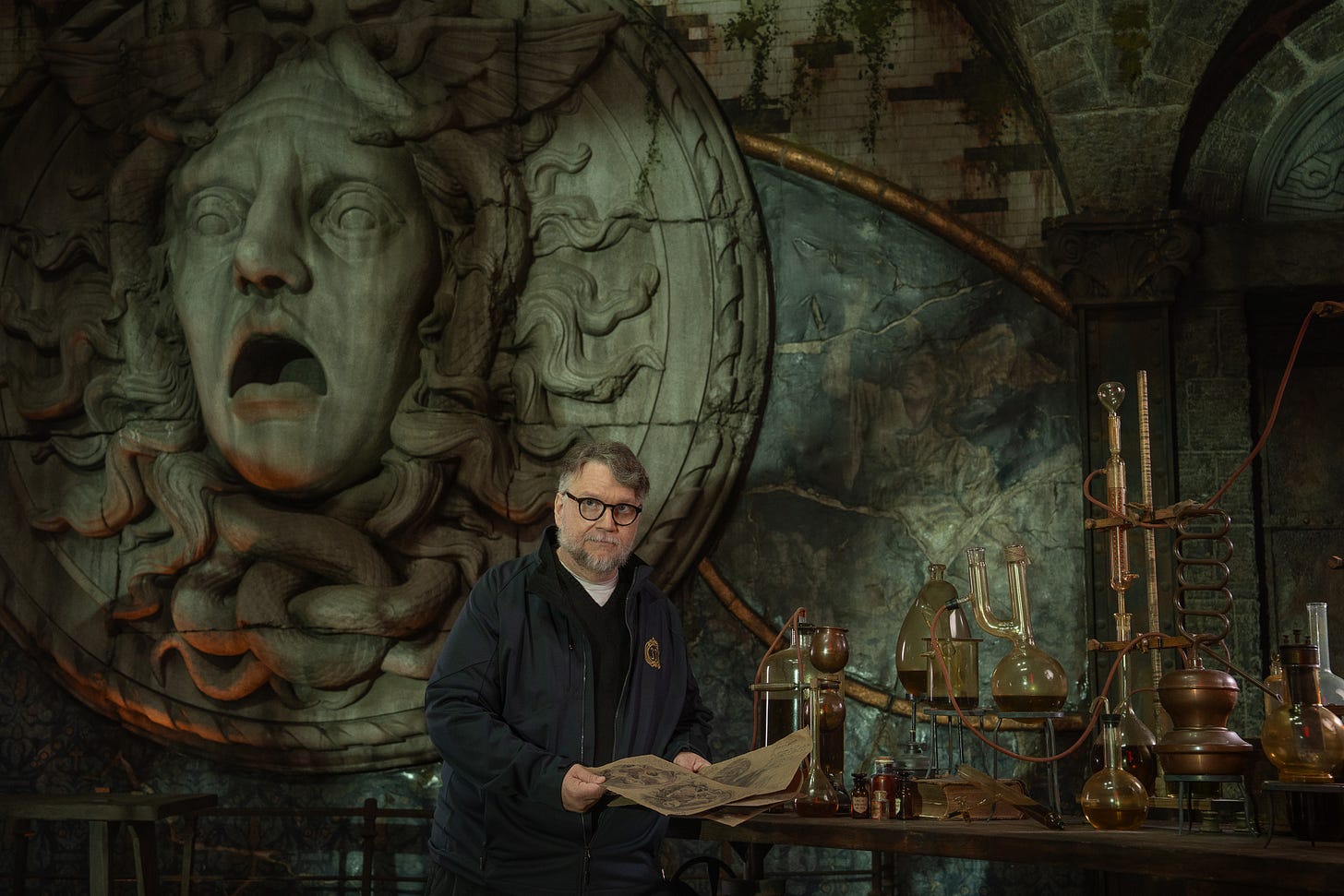
He didn’t intellectualize how the story matured with him — he stated it plainly: “I’ll make this movie about my dad and I back then. And then as I became a father, I said my dad and I, and me and my kid. And eventually, it was about forgiveness and acceptance.”
Asked how he found his way into the adaptation, he shrugged: “The ending was my guide. The forgiveness and acceptance.”
The Burden of Inheritance
Oscar Isaac didn’t approach Victor through theory — he approached him through that first long conversation with del Toro. “We talked about our fathers. About being fathers. About family,” Isaac said. Two hours later, del Toro simply told him, “I want you to be Victor.”
Isaac remembered the film’s code name: Prodigal Father. “The father is the one that goes away and has to come back and basically say sorry,” he said. Del Toro added with a grin, “And it’s also Pinocchio. The same story.”
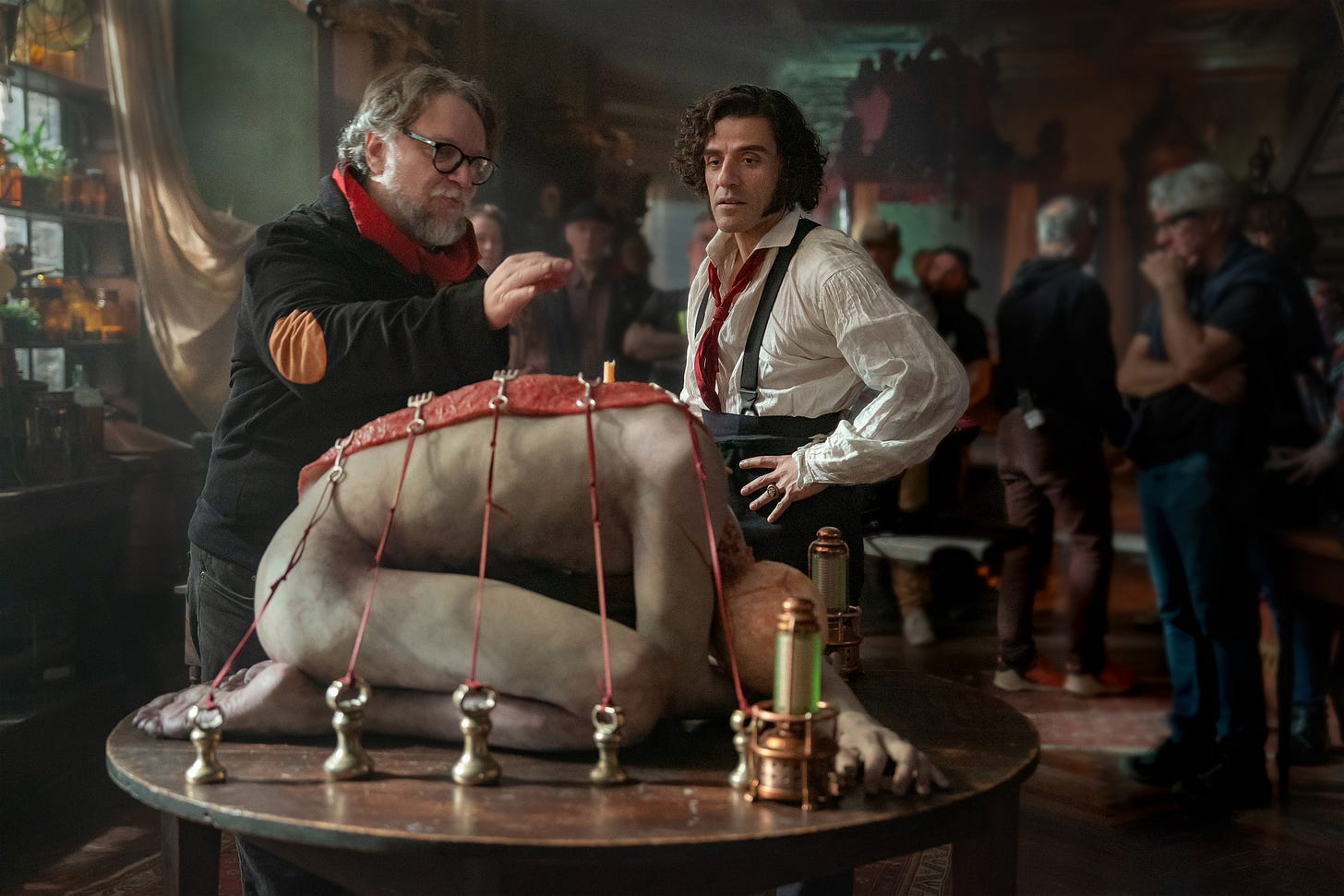
Isaac described Victor as someone fueled not by madness but total conviction: “Maybe that’s why it was fun — because he has no doubts.” Del Toro expanded on it in his unmistakable tone: “Every tyrant in the history of mankind has no doubt. And thinks himself a victim. That’s Victor. ‘Poor me, poor me.’ And they’re monsters.”
What moved Isaac most were the final pages del Toro first showed him. “Tears were streaming down my face. His recognition of him as his son… the grace in it… that destroyed me.”
The Creature as a Mirror
Jacob Elordi didn’t downplay how deeply the script hit him. “Every word of the Creature was something I was asking myself,” he said. “I get to be Job asking God why.” And then the line that sealed it: “Now run.” He laughed remembering the moment: “I heard drums in my head. I knew I had to do it.”
Del Toro suggested he look into Butoh, “this Japanese dance of death,” which Elordi said helped him figure out how a body stitched from parts might move. But he also studied babies, children, and animals. “My dog has this great innocence in the way she moves,” he said. He told a story about staring at her in a Toronto hotel room before filming: “She walked up… we touched noses… little static electricity… and I knew, okay. I’m good.”
When asked about the brutal emotional toll of the role, he didn’t hide behind craft: “All of that suffering and pain and trauma is already in our system. The film was cathartic. I got to look it in the face.”
Crafting Flesh and Soul
Mike Hill — del Toro’s long-time creature collaborator — didn’t sugarcoat it: “Our call time was midnight some nights. We’d start putting the appliances on Jacob for ten hours.” He emphasized the strain: “It is literal torture. Sit in a chair for ten hours and don’t move.” But he also praised Elordi without qualification: “He never complained once. Not once. And we did it 56 times.”
Elordi shot back with affection: “I got a professor’s education in monster films from Mike.”
Del Toro jumped in to underline Hill’s rarity: “Ninety-nine percent of makeup effects guys can make a monster. One percent can make a character.”

Hill described the design intent as clearly as del Toro does in his films: “We didn’t want an accident victim. This is not a repaired creature. We were making a newly minted soul.” He explained the philosophy behind the skin tones, the mismatched pieces, the careful asymmetry: “Parts of the Creature are blue, where the flesh hasn’t taken. That mosaic of parts — that’s what makes him great.”
And always, it came back to the eyes. “Every line on that face is to direct you to look at Jacob’s eyes,” Hill said. “We were making a person.”
The Poetry of the Body
Mia Goth didn’t pretend she arrived fully formed as Elizabeth. “Once I landed in Toronto, I still didn’t have a full grasp,” she said. Everything shifted in the fittings. “I started to understand Elizabeth from the outside in. The story the fabrics were telling… that’s when I found her.”
Kate Hawley echoed this, saying the emotional connection began with the material itself: “Guillermo said to me, ‘I don’t want fusty old period for this.’” Her costumes for Elizabeth drew from insects, botany, and organic structures, weaving subtle patterns into fabrics that shaped Mia’s physicality and presence.
The corsets were punishing. “Very difficult,” Mia admitted. “Frustrating.” But then: “Once I stopped trying to fight it and just went with the experience, it was helpful. It’s exactly what Elizabeth was feeling.”
Del Toro later revealed why Elizabeth became so central: “She became an amalgam of me and Mary Shelley. She’s the most intelligent character in the movie. She understands more than anyone else.”
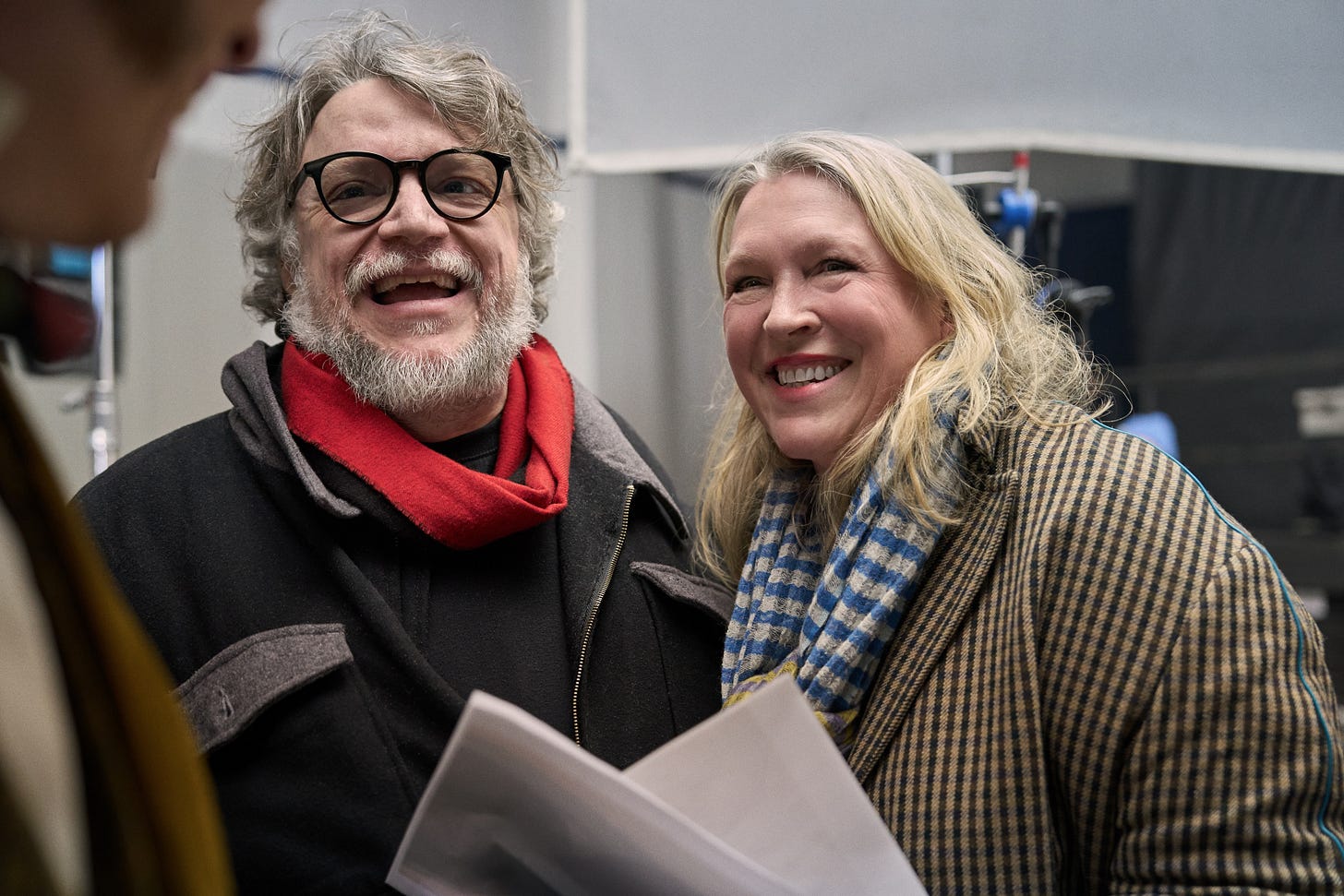
Building a World of Circles and Scars
Production designer Tamara Deverell broke down how Victor’s lab was built in layers — architectural, emotional, symbolic. “We started in Scotland,” she said. “Looking at buildings that inspired us.” But the breakthrough came from a single gesture: “At one point I canted the upper walls in toward the vortex. Guillermo said, ‘I like it.’ And we found it.”
Del Toro joked: “Anything legally actionable is my idea.”

She described the process as “layers upon layers of paint, sculpting, hand‑hewn surfaces,” and emphasized the guiding visual idea: circles. “You’ll see circle motifs everywhere — the circle of life, beginning and end, ouroboros. We worked that into every space.”
Del Toro summed it up: “This isn’t eye candy. It’s story.”
Color, Silence, and the Music of Souls
Composer Alexandre Desplat spoke about their collaboration with warmth: “There’s no tension. With Guillermo, I can fly faster and higher.” The key moment he recalled was the so‑called body‑building sequence — when Victor assembles the corpses. “Any other project might have asked for horror,” he said. “But Guillermo said, ‘Feel the trance of the doctor.’ So, we went for a waltz.”
Del Toro laughed about their dynamic: “I give him a lot of ideas, and he reneges on all of them. Then he explains, very gently for a Frenchman, why they’re wrong.”
Their rule is simple: the music must move del Toro. “If I don’t cry,” he said, “it’s not ready.”
Desplat added, “When I’m too gentle, too restrained, too French, he reminds me that I have to be more Mexican.”
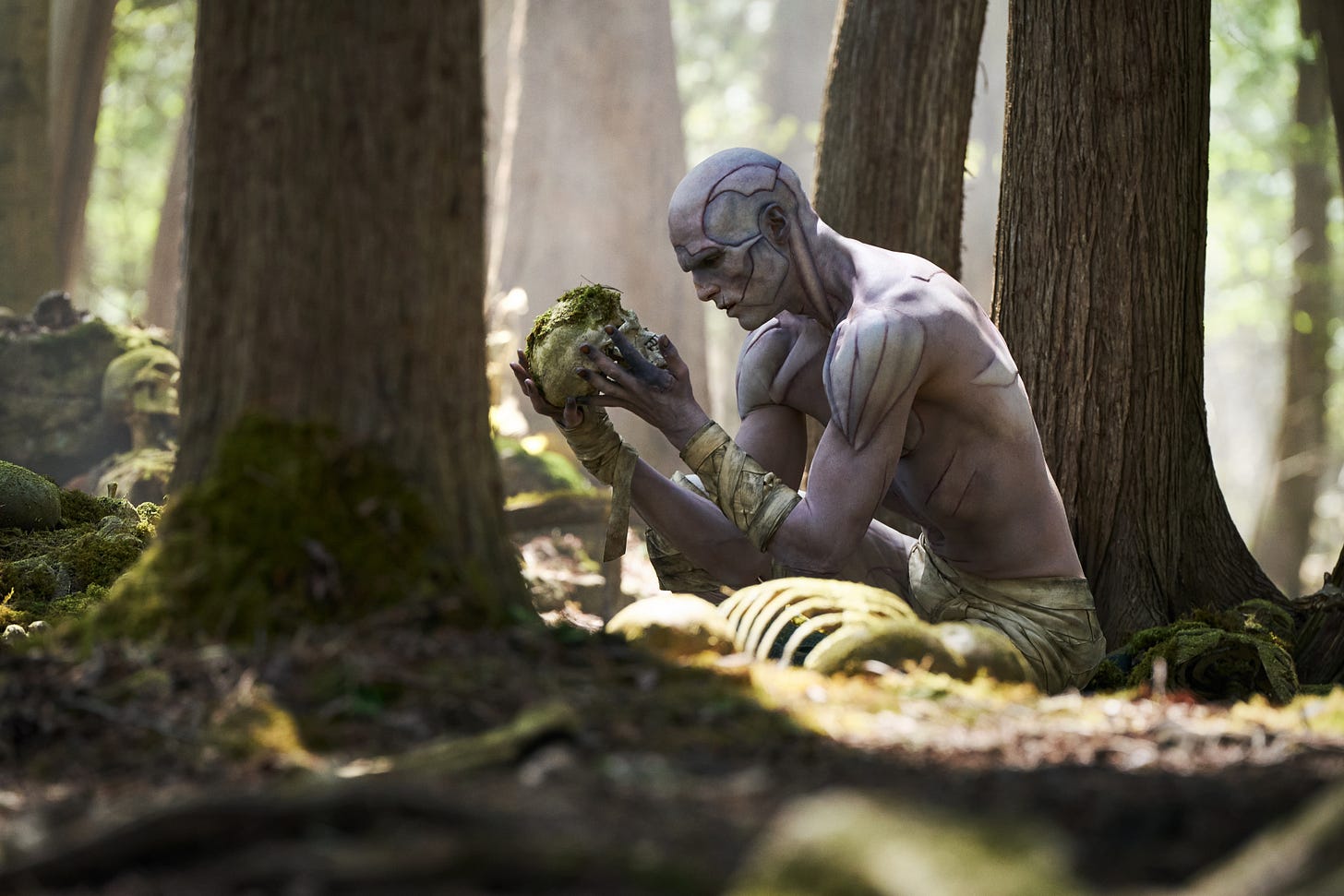
Romantic Punk
When the conversation turned to Mary Shelley, del Toro didn’t speak academically. He spoke like someone who has carried her with him his whole life. “I have dedicated my life to the Romantic movement,” he said. “Mary Shelley, Percy Shelley, Byron… decades of study.”
He stressed something many forget: “These people were punks. Iconoclasts.” Mary escaping at sixteen. Percy threatening melodramatic death. Byron riding into Waterloo. “This is not a languid thing,” he insisted.
He said the film is not just the book, but “an amalgam of her biography, my biography, the Romantic movement, the novel.” And his metaphor for adaptation — already legendary among reporters — resurfaced: “Adapting a book is like marrying a widow. You have to respect the late husband. But on Saturdays, you’re getting it on.”
When asked what he’d ask Mary Shelley if he could meet her, he didn’t hesitate: “I would not ask anything. I would listen.”
“Emotion is the new punk,” he said. “The new anarchy. To all that wisdom you bring with your irony, to all that callousness you bring with your certainty, I give you this: emotion — and fuck you.”
It was raw. It was defiant. It was del Toro.
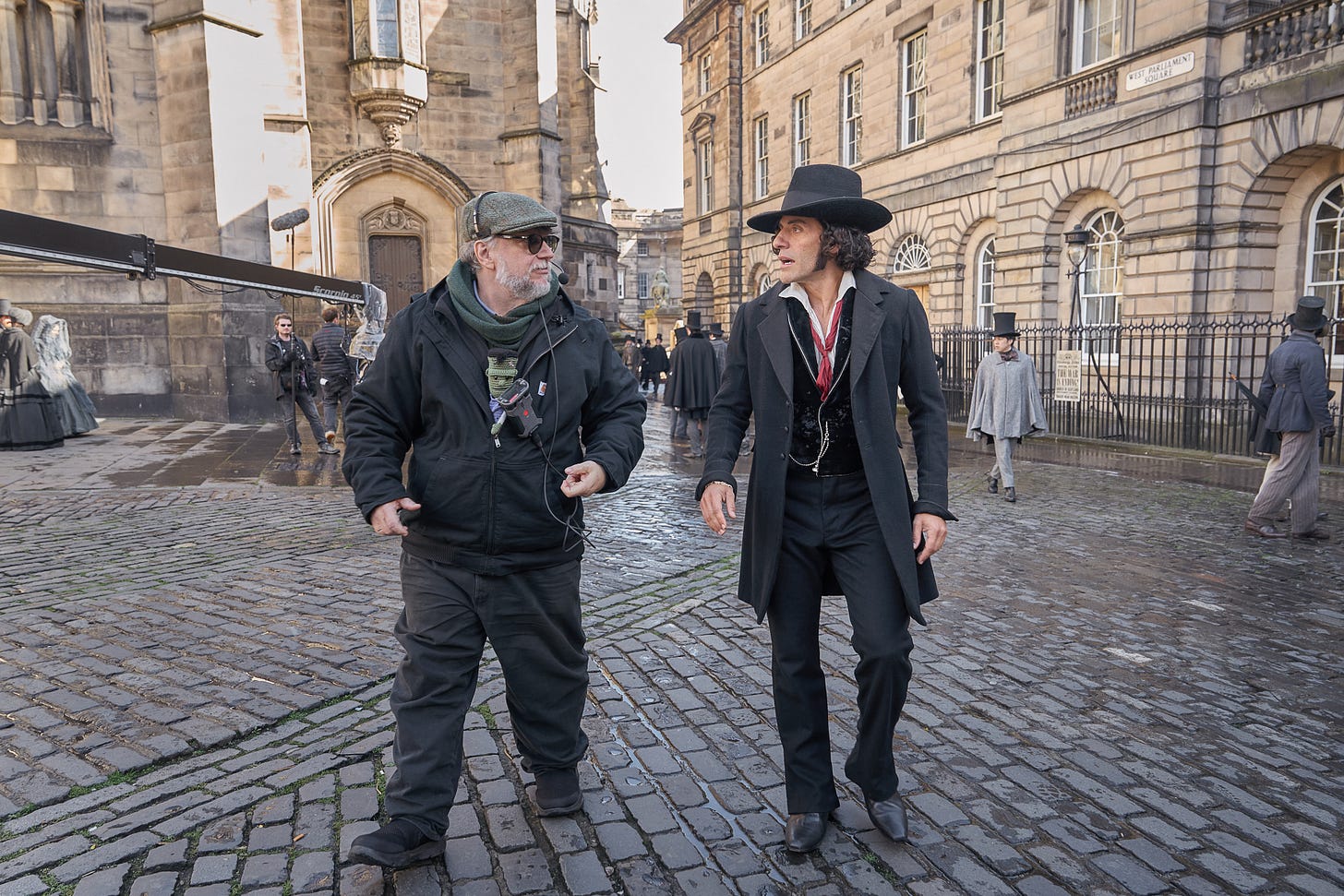
A Story Reborn
What makes this Frankenstein uniquely del Toro’s is not simply its craft — though the craft is immaculate — but its emotional honesty. It is a story of longing, of failed fathers, of wounded sons, of cycles broken and cycles repeated. It is a story of the pain we inherit and the pain we pass on.
And, ultimately, it is a story of forgiveness.
As the director said: “I provide the supermarket, not the shopping list. You buy whatever the fuck you need.”
This press conference made one thing clear: everyone involved brought something personal to the film — something lived, something felt, something raw. And in doing so, they created a Frankenstein that is less about monsters and more about what remains human in us after everything else is stripped away.


